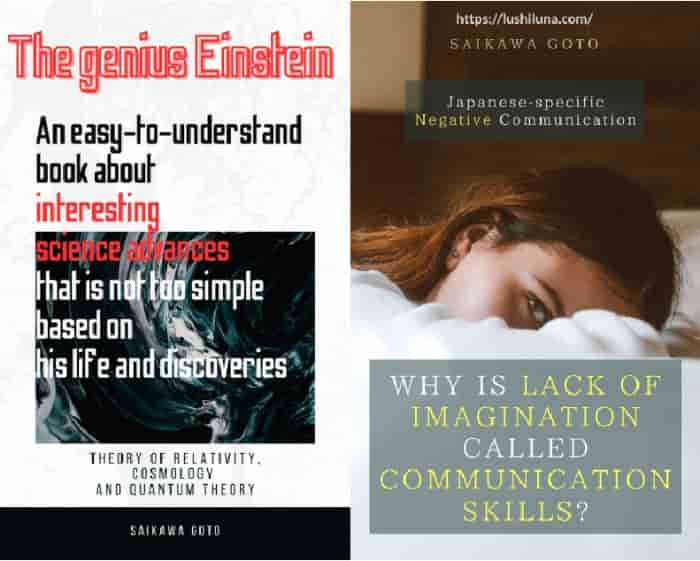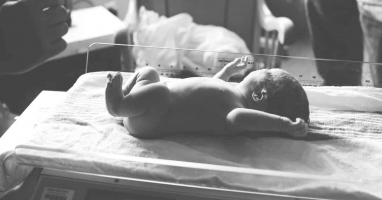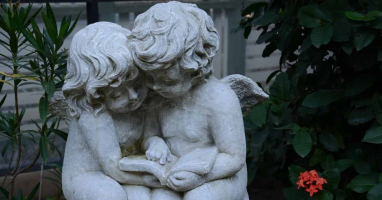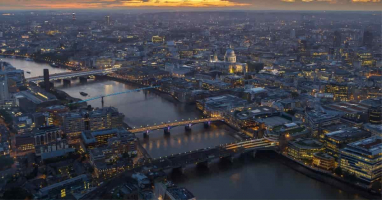I wrote this article in Japanese and translated it into English using ChatGPT. I also used ChatGPT to create the English article title. I did my best to correct any translation mistakes, but please let me know if you find any errors. By the way, I did not use ChatGPT when writing the Japanese article. The entire article was written from scratch by me, Saikawa Goto.
Introduction
Movies and books covered in this article
Three takeaways from this article
- Suzuki Toshio kept sitting next to the silent Miyazaki Hayao for three days when they first met.
- Many people opposed “Princess Mononoke”.
- What was the reason for promoting “Spirited Away” mainly with “No-Face”?
Self-introduction article


Published Kindle books(Free on Kindle Unlimited)
“The genius Einstein: An easy-to-understand book about interesting science advances that is not too simple based on his life and discoveries: Theory of Relativity, Cosmology and Quantum Theory”
“Why is “lack of imagination” called “communication skills”?: Japanese-specific”negative” communication”
The quotes in the article were translated using ChatGPT from Japanese books, and are not direct quotes from the foreign language original books, even if they exist.
Suzuki Toshio Speaks about the Genius Miyazaki Hayao, Takahata Isao, and Ghibli and the Behind-the-Scenes of its Works in This Book
This book compiles the descriptions of the “Ghibli textbook” series.
In “Ghibli textbook” published by Bungeishunju, one book covers one Ghibli work and talks about it from various angles. Among them, there is a corner where Suzuki Toshio analyzes and talks about memories of each work, and this book is a reconstruction of only Suzuki Toshio’s part from those.


The author wrote the following in the afterword:
I was surprised when I read the proof. Even though it was about my own experiences, I couldn’t remember most of the details of the story.
They also wrote:
While reading, I felt like I was reading about the events of historical figures.
To me, it felt like a testament to Suzuki Toshio’s hard struggle, as he had been running forward without looking back on the past.

How did Suzuki Toshio Get Involved with Ghibli?
It is not clear whether this is a well-known story or not, but Suzuki Toshio was not originally with Ghibli from the beginning. He originally worked for a publishing company called Tokuma Shoten Publishing.

During the mid-1970s when he joined the company, being a journalist or editor wasn’t considered a “profession” and was thought to be a part of the “yakuza world”. During such times, he became involved in the work of a journalist and magazine editor.
The direct trigger for Suzuki Toshio’s involvement with Ghibli was the magazine “Animage”.
Originally, Suzuki Toshio had nothing to do with “Animage”. However, he suddenly received a request from a man who was preparing to launch the new anime magazine, “If I get into a fight with an external production company, I won’t be able to do it anymore. Can’t you take over for me?”. He had no knowledge of anime at all, but due to the urgency of the situation, he had no choice but to accept.

But there was a big problem. When he took over, there were only two weeks left until the deadline. Normally, it would be impossible to create the inaugural issue of 118 pages in just two weeks. However, he couldn’t just give up. While struggling to figure out what to do, Suzuki Toshio remembered a story from a female high school student who loved anime that was introduced to him by a former editor-in-chief: “The Great Adventure of Horus, Prince of the Sun” is interesting.
Suzuki Toshio decided to go with that for the inaugural issue. And so, from that flow, he would get involved with creators Miyazaki Hayao and Takahata Isao.

The first encounter with Miyazaki Hayao was quite exciting.
On one hand, Miya-san was in the midst of producing “Lupin The 3rd The Castle of Cagliostro”. Later, Miyazaki Hayao reminisced about that time and said, “I thought an unsavory character had come,” but the first thing he was told when they met was, “I don’t have any fondness for ‘Animage’ which is trying to profit from the anime boom. If I talk in such a magazine, I will become dirty. I don’t want to talk with you.”

So what did Suzuki Toshio, who was told this, do? He apparently continued to sit next to Miyazaki Hayao, who was diligently drawing, for three days straight. Only then was he finally able to get him to talk. However, Suzuki Toshio’s courage is also impressive, as he spent three days of the two weeks until the inaugural issue just “waiting”.

Suzuki Toshio’s impression of “anime” and “animators” changed as he was exposed to the work of Miyazaki Hayao and Takahata Isao.
Seeing the two of them work so hard, I thought to myself, “‘artists’ are in places like this now?” At the time, the only person who embodied my image of an artist was Yoshiyuki Junnosuke, but Takahata and Miyazaki were the ones who had the stoic artistic qualities I imagined.

In this way, Suzuki Toshio became involved with Ghibli, but he remained a member of Tokuma Shoten Publishing for some time, even during the period when they were producing “Princess Mononoke” and “My Neighbors The Yamadas”.
This was because the bad debt problem of Tokuma Group, the parent company of Ghibli, was becoming serious, and I was forced to deal with it. My days consisted of going around the three areas: Otemachi where the main bank Sumitomo Banking was located in the morning, Shimbashi where Tokuma Shoten Publishing was located at noon, and Higashikoganei where Ghibli was located at night.
It seems that it was not a time when he could devote himself to Ghibli. In fact, Suzuki Toshio had no title at Ghibli and was just involved because he found it interesting. Before he knew it, he had become a producer at Ghibli, and I think that shows how unpredictable life can be.

Suzuki Toshio’s Involvement in Various Works
Ghibli has produced various works, all of which are known as masterpieces, but there were various struggles behind their creation. Let’s take a look behind the scenes of some works, focusing on how Suzuki Toshio was involved.

“Porco Rosso” was originally created in response to a request for a “15-minute short film to be shown on JAL flights.” Miyazaki Hayao drew storyboards for it, but Suzuki Toshio felt like something was missing and asked “Is this it?” At first, Miyazaki Hayao had only intended to create the opening scene of what is now Porco Rosso.

Then Suzuki Toshio kept asking Miyazaki Hayao, “What kind of setting is this?” and “Don’t you feel everyone want to know about this part, too?” It was during this process that the story became a 93-minute feature film.
The production of “Howl’s Moving Castle” began with the creation of the castle. After the film was released, the castle design was highly acclaimed and even called “the Picasso of our times” by the French newspaper Libération.

Miyazaki Hayao was the one who worked on it, and there was a time when he showed his sketch to Suzuki Toshio and asked, “Does this look like a castle?” Suzuki Toshio responded with this exchange:
To be honest, it doesn’t look like a castle. But if I said that, production would stop again. So I said, “It looks good. I can see it.” I thought it was important to move forward regardless.
Although it is understandable if you read this book, it is difficult to handle both Miyazaki Hayao and Takahata Isao. They are both craftsmen with different temperaments, often acting emotionally according to their own ideals and obsessions, which can lead to various production delays.

What I found to be the biggest pinch I had in this book was the event during the production of “Pom Poko”. It is said that Miyazaki Hayao seriously suggested to cancel the production of this movie, which was being directed by Takahata Isao. According to Suzuki Toshio, it was a “terrible ordeal,” and even he, who had overcome various crises in the past, was at a loss, and it was a situation where Ghibli might have ended as it was.
So Suzuki Toshio took a desperate gamble and decided to take a tough approach of “resting Ghibli without permission.” As a result, it seems that this worked, and the conflict between the two was resolved at the last minute, and Ghibli was able to proceed with the production without disintegrating.

However, it must have been really like walking on a tightrope every day, never being able to rest easy. As someone who is not familiar with the industry, like me, it is often hard to imagine what the people called “producers” are doing, but it can be said that Suzuki Toshio’s biggest job was to make sure that Miyazaki Hayao and Takahata Isao were properly focused on the production.
There is also a story about “Tales from Earthsea”. Originally, Suzuki Toshio intended to have Miyazaki Goro (Miyazaki Hayao’s son) as the film director. However, based on his past experiences, it was clear that if he mentioned the name “Miyazaki Goro” from the beginning, Miyazaki Hayao would oppose it. Therefore, he first presented another dummy names, and then said, “How about Goro-kun?” which worked out well.

“Working with a genius” would be definitely an interesting and stimulating experience, but it also comes with many challenges and hardships, as expected.
“Princess Mononoke” was “Opposed” by Various Parties
In terms of “producing a film” not “producing film directors,” the most difficult film was “Princess Mononoke.” This was because the film was “opposed” by various people.

It took two years and twice the usual budget to make it. However, not all related companies supported the idea. Nippon Television Holdings, who had been in a cooperative relationship for many years, DENTSU, who joined as a shareholder from this time, and TOHO, who distributed the film, were all skeptical about the “Princess Mononoke” project. At that time, there was an atmosphere in the Japanese film industry that “chanbara” films were over and would not succeed commercially. Many people thought that “No matter how much Miyazaki Hayao makes it, the risk is too great.”
As mentioned earlier, Suzuki Toshio was struggling with the bad debt disposal of Tokuma Shoten Publishing at that time and was irritated. He said that he “wanted to make a BOUKENKATSUGEKI (action adventure) that would make me feel refreshed,” but he faced opposition because “BOUKENKATSUGEKI is already outdated.”

However, you might feel it’s not unreasonable to object.
When I calculate the production and advertising costs, to break even, we needed to exceed the highest Japanese film distribution revenue record held by “ANTARCTICA” at 5.9 billion yen. Can we really do that? They confronted me with this fact.”


Certainly, considering this fact, it can be said that the challenge of “doing a BOUKENKATSUGEKI (action adventure) that is already considered old” is quite reckless. As a result, “Princess Mononoke” achieved a box office revenue that surpassed even the world record of “E.T.” at the time, which was 9.6 billion yen, but no one could have predicted such success before its release, and no amount of explanation would have convinced them.
That’s why Suzuki Toshio didn’t inform TOHO even after the film was completed. He knew that if he showed it, he would be criticized. So he went through with the strategy of pretending that the film was “late in completion” and waiting until the very last minute, when it would be impossible to turn the situation around now, before previewing the film. In the end, Suzuki Toshio won the bet, but I think it’s amazing that he could believe in the work “Princess Mononoke” to this extent.

Suzuki Toshio spoke about this point as follows:
I believed that the age of movies requiring philosophical messages has come.
This philosophy is also reflected in the advertising copy he came up with, “to be”. There were voices of opposition claiming it was “too philosophical”, but Suzuki Toshio pushed forward with it. Various concerns were raised before the release, but the box office results swept all of them away.

Suzuki Toshio sees the work “Princess Mononoke” as not being the culmination of Miyazaki’s anime career.
He says, People have said that it’s the culmination of Miyazaki’s anime career, but I don’t think so. If it were a culmination, then the movie would have included scenes of flying through the air and showcased all of his signature techniques. However, Miya-san challenged himself to try new things that he had never done before, and as a result, the movie ended up with a sense of frustration in not being able to fully realize the big themes it presented. So, in terms of perfection, it’s not necessarily high. On the other hand, “Princess Mononoke” had the rough “raw freshness and energy” of a new director’s work.
Perhaps it’s because he has been watching Miyazaki Hayao for a long time that he could see it as a “work that suppresses his signature techniques,” and he could also say that “the perfection is not necessarily high.”

“Princess Mononoke” was a work that not only became the opportunity for Ghibli to expand globally, but it wasn’t necessarily created with that intention from the start. It began with the discussion of outsourcing the video sales of Ghibli works to external companies.
Although there were offers from various companies, one of them was “the Walt Disney Company (Japan)”. Despite being the worst condition-wise, Suzuki Toshio decided to go with Disney after considering various information, including the personality of the other party.
At that time, Suzuki Toshio added one condition. That was to “release ‘Princess Mononoke’ in America”. And as a result of that release, Ghibli works would spread to the world.

Suzuki Toshio’s Conflict in the Promotion of “Spirited Away”
It is surprising to hear that “No-Face” didn’t originally appear in “Spirited Away”, isn’t it.

As usual, Miyazaki Hayao was talking endlessly about the content of the new anime one day, but Suzuki Toshio couldn’t quite get the story. However, if he said something like “I cannot quite get it,” the production would come to a halt. So Suzuki Toshio said, “That will make the story about three hours long, but it’s okay, let’s make it long this time.” This is also a testament to Suzuki Toshio’s skills as a producer, knowing that Miyazaki Hayao didn’t want to make a long movie.

As expected, Hayao Miyazaki did not want to tell a long story, so instead, he drew a character that would become the prototype for “No-Face. And such “No-Face,” was born like that, made Toshio Suzuki feel conflicted.
It looked like this:
When I heard that, two conflicting thoughts came to my mind.
The new idea is certainly interesting. However, some children might see something like a dark side of the heart in “No-Face,” and might be affected by this movie for a long time, even influencing their personality development. Isn’t it unhealthy to do such things in a movie aimed at ten-year-old children…?
Suzuki Toshio, who was troubled by this, was urged by Miyazaki Hayao to “decide on one,” and ended up choosing “No-Face.” Thus, the production of “Spirited Away” began.

However, Suzuki Toshio’s struggle continued.
But, I kept worrying about whether it was really okay to make such a film. To be honest, I thought that the “No-Face” would be the one to become a hit. Since “Princess Mononoke”, I felt that a simple story of good versus evil could no longer attract audiences. It had become a time when even entertainment movies needed philosophy.
At that time, anime was still seen as something mainly for children, even though it is now recognized that adults enjoy it too. It was a turning point in the era, and it was likely that the trend of the times would be decided by the decision of a top runner named Ghibli. I believe that Suzuki was worried in a situation where he could not just think about the management of the company.

On the other hand, there were also such concerns.
As you may know, “Princess Mononoke” recorded a huge hit that changed the history of Japanese movie industry. It became a social phenomenon, and the name of Miyazaki Hayao started to walk alone. I felt anxious that if it happened again, Miya-san would become strange…
If people around him have such concerns, there must have been some signs. Also, the fact would indicate that the hit of “Princess Mononoke” was even more incredible than we imagined.


Suzuki Toshio was troubled, so he consulted his son, Miyazaki Goro. Their conversation was quite crazy.
“Please make it twice as big a hit as ‘Princess Mononoke.'”
“Why? If Miya-san goes crazy, your family might fall apart.”
“No, I want to make the museum a success.”
I thought to myself, “He’s an amazing person…He doesn’t even consider his family for his work.” That’s something he inherited from Miya-san.
It was the statement that the need for abundant funds for the construction of the Ghibli Museum at the time, which was in progress. It’s true that like father, like son.

Suzuki Toshio, while interacting with various people, learned that some people only expected “Spirited Away” to be about half as successful as “Princess Mononoke.” Even so, “Princess Mononoke” was an unprecedented blockbuster hit, so even half of that would be an excellent box office revenue. However, upon realizing these expectations, Suzuki Toshio was inspired to aim for a huge hit.
He decided to push “Spirited Away” to its full potential, and prepared a promotion centered around “No-Face.” However, everyone, except for Suzuki Toshio, seemed skeptical about whether such an advertisement would be successful.
Interestingly, Miyazaki Hayao’s reaction was particularly noteworthy.

During a massive advertising campaign that was unprecedented in terms of both scale and cost, Miya-san, who usually showed no interest in publicity, came to my room and said something unusual. “Suzuki-san, why are you advertising with ‘No-Face’?” “Well, this is a story about Chihiro and ‘No-Face,’ isn’t it?” “What!?” Miya-san was shocked. “Isn’t it a story about Chihiro and Haku…?” Later, after the movie was almost completed and Miya-san saw the connected rushes, he said deeply, “I understand now, Suzuki-san. This is a story about Chihiro and ‘No-Face’.” Not only the advertising staff, but the director himself had not realized it. Even the person who was making it didn’t notice. I thought that was what a work of art was all about.


This is also an incredible story. Because even the person who created it didn’t think it was story about “No-Face”. Of course, others probably didn’t think so either. But only Suzuki Toshio saw the essence of this work and decided to push “No-Face” to the forefront.
He had confidence in it.
“No-Face” will make this movie a hit. No, I even worried that too many customers would come. It might sound arrogant, but I had such a deep conviction.

In the end, “Spirited Away” recorded a huge hit of 30.6 billion yen, and it was an unmovable record until “Demon Slayer: Kimetsu no Yaiba the Movie” surpassed it. Suzuki Toshio’s conviction was correct, but I can’t believe how could he had such a deep conviction with just “No-Face.” Just this point alone makes us realize how amazing the producer Suzuki Toshio is.
Now, “Spirited Away” also had a significant impact on the film industry in a different sense. Due to the recording of an overwhelming mega-hit, other movies that were expected to be hits at the same time of release all lost out. As a result, there was a growing sentiment to avoid creating similar mega-hits after “Spirited Away.”
In this light, it could be said that the release of “Demon Slayer: Kimetsu no Yaiba the Movie” at a time when the film industry was in a state of depression due to the COVID-19 pandemic was, in a sense, exquisite, and that is why the film was such a mega-hit.

About Miyazaki Hayao
Until they established the company “Ghibli” and hired exclusive animators, Miyazaki Hayao and others commissioned animation production to external production companies. However, when they were making “Nausicaä of the Valley of the Wind”, everyone said the same thing.
If Miyazaki-san makes it, he will make something good. We know that. But both the staff and the company will be in disarray. That’s how it has been until now.

Miyazaki Hayao is known to have high expectations for animators.

Suzuki Toshio seemed to understand as follow.
Miyazaki Hayao is looking for a “self-replica” among his staff, rather than just finding good things in them and helping them grow.

To complete a single work, there are times when he has to say harsh things to those who were lined up at their desks. If the animators’ acting is heading in a direction different from what he intended, he must say “that’s not it” and give instructions. With each word, everyone distances him. Miya-san says he can’t bear this loneliness.
If he could draw all the pictures himself, there would be no problem, but that’s impossible. That’s why he has other animators draw them, but if it’s not the “acting” that Miyazaki Hayao imagines, he has to point it out. So in the end, he ends up seeking “his own replica “.

There are many “talented but difficult animators” at Ghibli who may refuse work even if they are Ghibli employees. It is because of such geniuses that memorable scenes in anime history are created, but Miyazaki Hayao once complained to the staff as follows.
I want sincerity towards the work more than talent.
Even with his genius, Miyazaki Hayao cannot create anything alone, so he has to face various struggles.
On the other hand, Miyazaki Hayao’s “management ability” is also intriguing.

When starting production of “Porco Rosso,” Miyazaki Hayao declared a policy of “assigning all important work to women” and “making the background based on the sea and sky.”
This was due to the fact that at the time, the main staff, who were male and considered “ace level,” were exhausted from the production of “Only Yesterday” that had been taking place until recently. Therefore, in order to make “Porco Rosso” as quickly as possible, it was urgent to reduce the burden of production as much as possible. In other words, the pressing challenge was to “rest the aces and reduce the amount of work.”
However, if he conveyed that directly, morale would decrease and friction would arise. So he changed the wording to “asking women to do it.” I have the impression that people who are geniuses and craftsmen are not very attentive to human relations, but it seems that Hayao Miyazaki was very good in this area.

It is said that he also demonstrated his unique talent in designing the new company building. Not only was it superior in terms of design, but he also personally chose the building materials and managed to complete it inexpensively.
In this regard, it contains these words from a tax office official who came to assess property taxes.
We are professionals who calculate asset value by looking at buildings like this. However, we have never seen a building that has been created with such originality and ingenuity and yet is so cheap… Who designed it?

Even professionals in the field of finance were amazed by the design. He not only showed his talent in creative work, but also in practical work.

About Takahata Isao
When it comes to Ghibli, the impression is that Miyazaki Hayao gets more attention, but Takahata Isao is also an amazing person. His achievements in the history of animation are truly remarkable.
In September 1999, when the English version of “Princess Mononoke” was released in the United States, a screening of all Studio Ghibli works was held at MoMA (The Museum of Modern Art, New York). On the final day, after all the events were over, I was called by the head of MoMA’s film department. “Thank you very much for your cooperation in the screening. I was shown all the works and I was surprised by one of them. ‘My Neighbors The Yamadas,’ would it be possible to add this work to MoMA’s permanent collection (permanent preservation work)?””

In the end, “Grave of the Fireflies” won many film awards, and its overseas reputation is exceptionally high. In France, it even achieved the remarkable feat of being screened daily for about 20 years.
While I was somewhat familiar with Miyazaki Hayao’s reputation, I must admit that I had no idea Takahata Isao was so highly regarded. I am ashamed of myself.

Miyazaki Hayao also said the following:
Most of Japan’s cel animation techniques are Takahata’s invention.
It seems that Takahata Isao laid the foundation for the anime we take for granted today. He was an amazing person.

However, Takahata Isao also seems to be quite a difficult person. His actions can be said to be “going beyond the norm” to improve the quality of anime.
At the beginning of “Grave of the Fireflies,” there is a scene where a B29 comes to Kobe for an air raid. At that time, Takahata-san investigated which direction the B29 was coming from and decided on the direction of Seita’s face, considering the direction of the entrance and garden of Seita’s house. As for how incendiary bombs explode too, I remember bringing one of the unusable incendiary bombs to the site, I don’t know where I got it. Anyway, no matter what he draws, he thoroughly researches it until he is satisfied with it.


He even said about the cultivation method of the safflower that he had interviewed, “Isn’t that a little wrong? According to my research, the way people in Yonezawa do it is correct” and said he would go back for another coverage. (omission) By the way, those who saw the research notes Takahata wrote were surprised and wondering who this person was.
Honestly, he seems like the type who would make us think “what a hassle…” if he were nearby, but I think it’s because of people like him that incredible works can be created that can only be evaluated as “amazing”.

Conclusion
The locus that the “geniuses” Miyazaki Hayao and Takahata Isao competed with each other in the same place, and the “genius” Toshio Suzuki, a producer, was incorporated into the competition, as if by accident, makes me feel so miraculous.
And, I feel that to live in the same era as such a “miracle” called “Ghibli”, and to be able to experience their works in real-time is also a miraculous thing.

Published Kindle books(Free on Kindle Unlimited)
“The genius Einstein: An easy-to-understand book about interesting science advances that is not too simple based on his life and discoveries: Theory of Relativity, Cosmology and Quantum Theory”
“Why is “lack of imagination” called “communication skills”?: Japanese-specific”negative” communication”








コメント